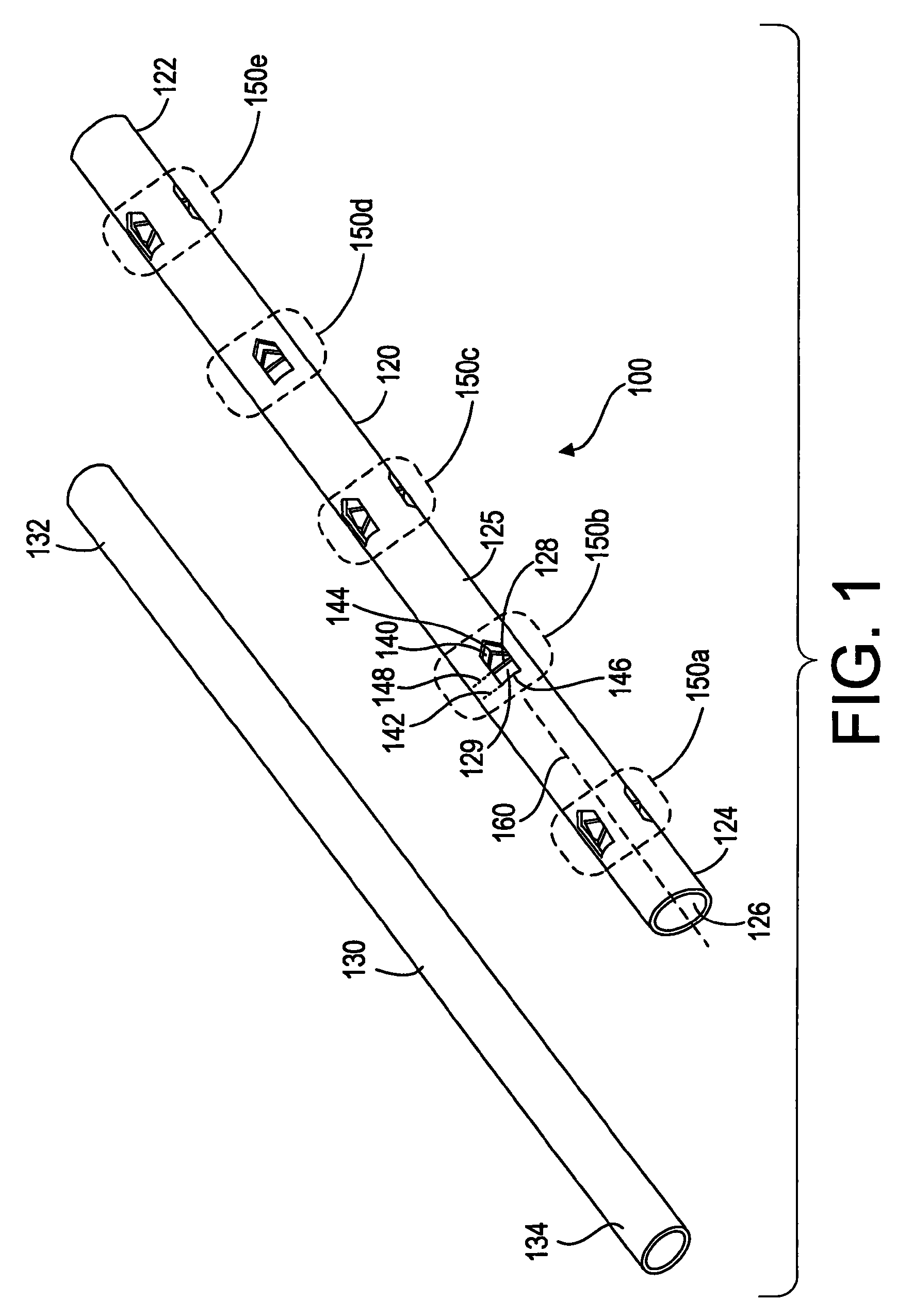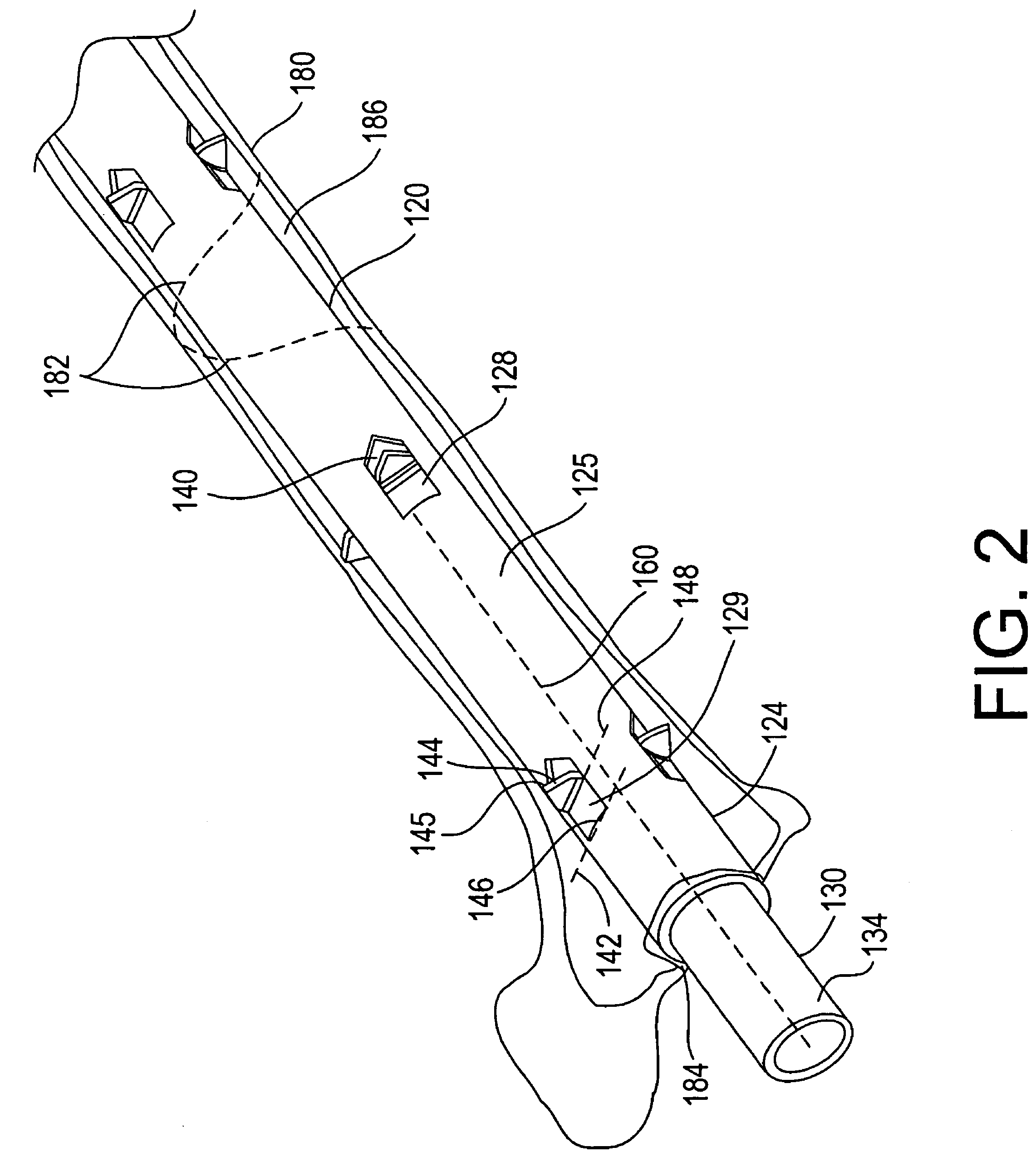Bone fracture treatment devices and methods of their use
a treatment device and bone technology, applied in the field of bone fracture treatment devices and their use, can solve the problems of lack of rotation stability, lack of longitudinal stability, and collapse of the fracture site in some fracture types, and achieve the effect of stabilizing the fractured bon
- Summary
- Abstract
- Description
- Claims
- Application Information
AI Technical Summary
Benefits of technology
Problems solved by technology
Method used
Image
Examples
Embodiment Construction
[0028]Referring now to FIGS. 1 and 2, a bone treatment kit 100 in accordance with one embodiment of the invention will now be described. The kit 100 generally comprises a bone treatment shaft 120 and an actuator 130 that facilitates anchoring of the bone treatment shaft 120 along a medullary canal of a bone. The bone shaft 120 has a first end 122, a second end 124, and a tubular wall 125 defining a lumen 126 that extends between the first and the second ends 122, 124. The actuator 130 has a first end 132 and a second end 134. The actuator 130 is sized such that it can be inserted into the lumen 126 of the bone shaft 120 during use. The bone shaft 120 and the actuator 130 can be made from a variety of biocompatible materials, such as plastics, polymer, metals, alloys, or ceramics. The bone shaft 120 and the actuator 130 can also be made from a bioabsorbable material, a tissue engineered material, a shape memory alloy or polymer, such as, nitinol, or other resilient materials, such as...
PUM
 Login to View More
Login to View More Abstract
Description
Claims
Application Information
 Login to View More
Login to View More - R&D
- Intellectual Property
- Life Sciences
- Materials
- Tech Scout
- Unparalleled Data Quality
- Higher Quality Content
- 60% Fewer Hallucinations
Browse by: Latest US Patents, China's latest patents, Technical Efficacy Thesaurus, Application Domain, Technology Topic, Popular Technical Reports.
© 2025 PatSnap. All rights reserved.Legal|Privacy policy|Modern Slavery Act Transparency Statement|Sitemap|About US| Contact US: help@patsnap.com



